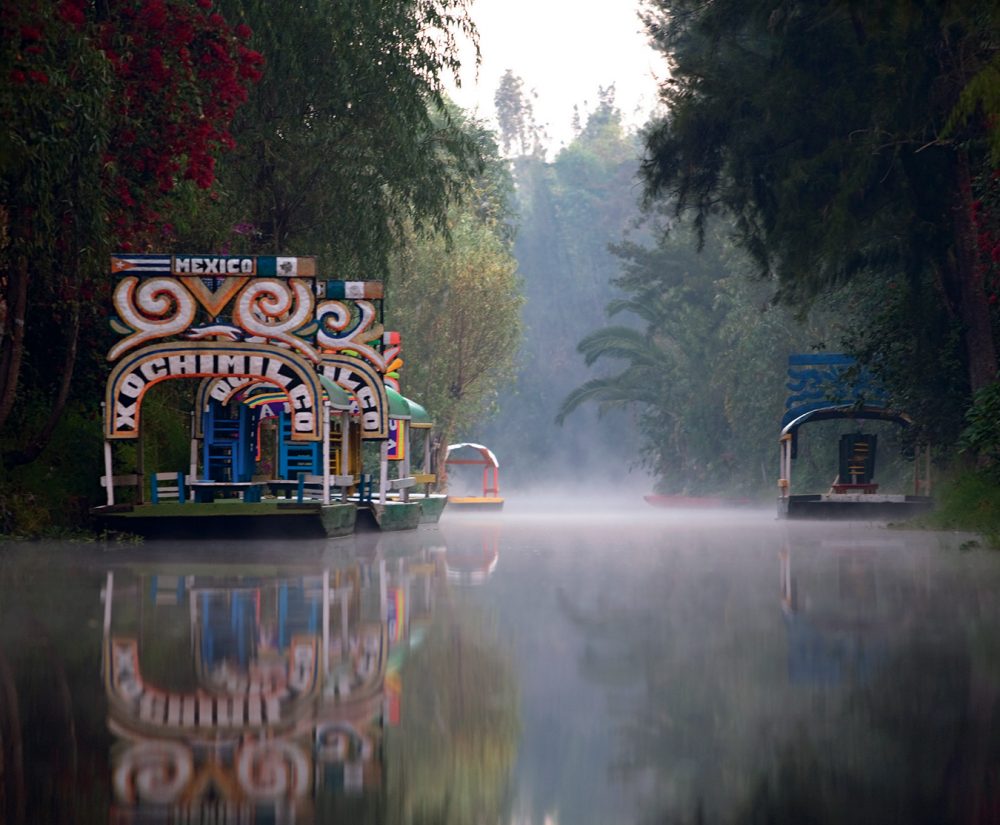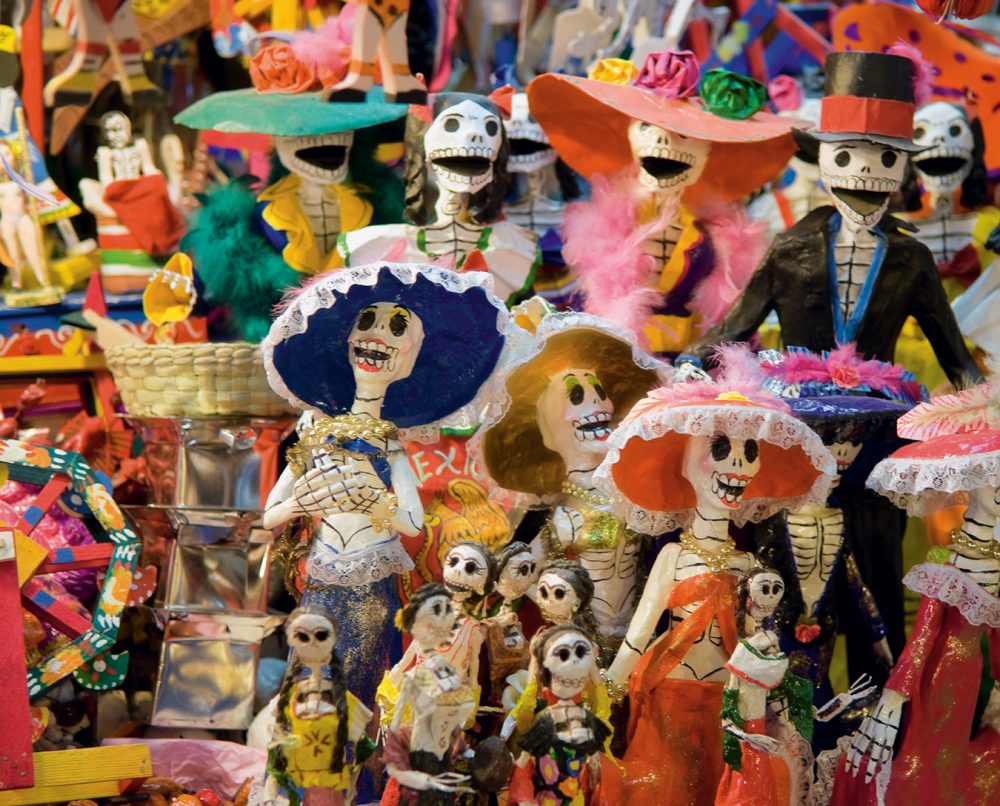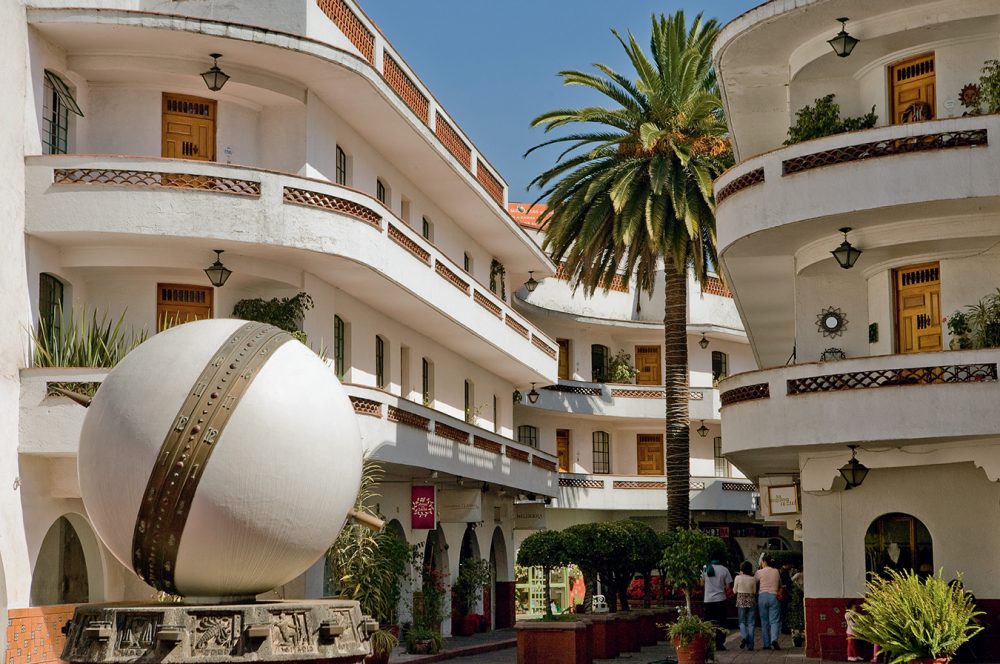Beyond my cabin window, flashes of electric white lightning tear violently across the sky, illuminating the concerned faces of fellow passengers aboard Air Canada Flight 669 to Mexico City. The pilot handles the turbulence with grace and ease as we descend toward the mountain-high mega-metropolis, but it does nothing to dispel my reservations about heading to a city that, for all my life, has been shrouded in mystery. Fear mongering in the news has painted a picture of Mexico so unnerving it’s no surprise I’ve often confused the country, as a whole, with its namesake capital, which has a metropolitan population of 21.2 million. Am I erring on the side of danger? I hope not. It’s too late to rescind my acceptance of the invitation to join a group of gringos looking to uncover the hip boroughs of this intriguing city.
The brilliant Mexican sun wakes me, bleary-eyed, as if last night’s flight and yesterday’s assumptions were nothing but a bad dream. From my 33rd-floor suite at the InterContinental Presidente Mexico City, I have a magnificent view of the lush Chapultepec Park, an urban forest stretching nearly 700 hectares across the city—not quite the kind of jungle I was expecting. Way off in the haze, the concrete and glass towers of Sante Fe are a distant antithesis to the breezy bungalows of Polanco beneath me.
Our day starts early with a walk through Chapultepec, set to the chirping sounds of chapulines (grasshoppers)—hence the name given by Aztecs to the nearby hill, or tepec, on which now sits the only castle in North America ever used to house royalty. We see numerous other museums and galleries hidden among the tress; Chapultepec Park boasts nine of the city’s 150 arts institutions, a sign of the country’s rich cultural history. Meanwhile, joggers and cyclists come from all angles to make their way along the paths toward Paseo de la Reforma. Like every Sunday, today, the 12-kilometre boulevard is closed to vehicles. We join the masses, taking in the monuments at each major intersection.
Paseo de la Reforma takes us from Chapultepec/Polanco, through the Zona Rosa to the Centro Historico, where the colonial buildings match perfectly the warbling tunes of organilleros (barrel organists). The edifices here not only appear lopsided, but are. Mexico City is built in a former lake basin, and each year the ground sinks a little. One narrow alley, Condesa, is now split into two tiers, and has become the home away from home for young booksellers. It backs on to the stunning Casa de los Azulejos, a palace built by a spiteful count who was once told by his father he would never afford a house with tiles. As an adult, he adorned the outside of his home, from top to bottom, with the blue and white hand-painted ceramics.
Condesa, the alley, is not to be confused with Condesa, the neighbourhood in Cuauhtémoc, though both are worth visiting. The latter is where the city comes to life after hours in the cafés, restaurants and bars, sometimes spilling right into the streets. Our favourite spot is atop the impossibly chic, open-air Condesa DF boutique hotel. Although not Mexican in origin, a sweet-and-sour caipirinha cocktail hits just the right spot at the end of a long day. Or, wherever you go, order a tamarind margarita; there’s really not a bad one to be had in Mexico City.
In the far-southern borough of Xochimilco, Mexico City is at its purest. Here remains an extensive canal system built by the Aztecs in the pre-Hispanic period, where Mexicans today love to float along the flooded passageways in vibrantly decorated tajineras (gondolas), and hire mariachis to serenade their picnics. Sure, it’s a bit campy, but that is of course the fun of it.
Not too far away in la Noria, another section of Xochimilco, is the former estate of Dolores Olmedo, a businesswoman, philanthropist, art collector and personal friend of Frida Kahlo and Diego Rivera. Olmedo’s rambling stone mansion has been transformed into a museum that showcases, in one wing, some of Rivera’s most seminal portraits, and in another, a heart-wrenching collection of Khalo paintings. All of this is amidst a stately garden where peacocks roam, proudly displaying their plumages. Olmedo’s grouping of Mexican popular arts—notably the larger-than-life party of Day of the Dead calavera (papier-mâché skeletons)—is equally enviable, though similar items can be had at la Ciudadela, a charming artisan market in Cuauhtémoc. In the evening, couples gather in the shade of the nearby Plaza de la Ciudadela park for impromptu dance lessons.
Mexico City exudes nonchalance like this. At times it’s lethargic (airports, markets), other times it’s familial and cool (courtyards, cafés). But inside the establishments that make up Polanco, the city’s most fashionable quarters, service is attentive, on point, excellent. At Pujol, the acclaimed restaurant of chef Enrique Olvera, the flavours and textures of traditional Mexican ingredients are tightly woven to create succinct, contemporary dishes. Example: bitter cuitlacoche (corn fungus) paste, served with sour nata (milk skin) foam, green tomato salsa and dried chilli powder. Or a skewer of grilled baby corn with coffee mayonnaise and baked ant dust, served in the hollowed and dried hull of a gourd, which, when opened, releases the smoky aroma of roasted corn husk.
Our seven-course meal at Pujol is the perfect note on which to end our visit to Mexico City. Like everything else we’ve experienced, it leaves us wanting more. My last impression is one of having barely scratched the surface of this cosmopolitan place, but I take comfort in reminding myself I’ll be back to uncover the rest of its marvels very, very soon.
Photos: © CPTM / Ricardo Espinosa.











